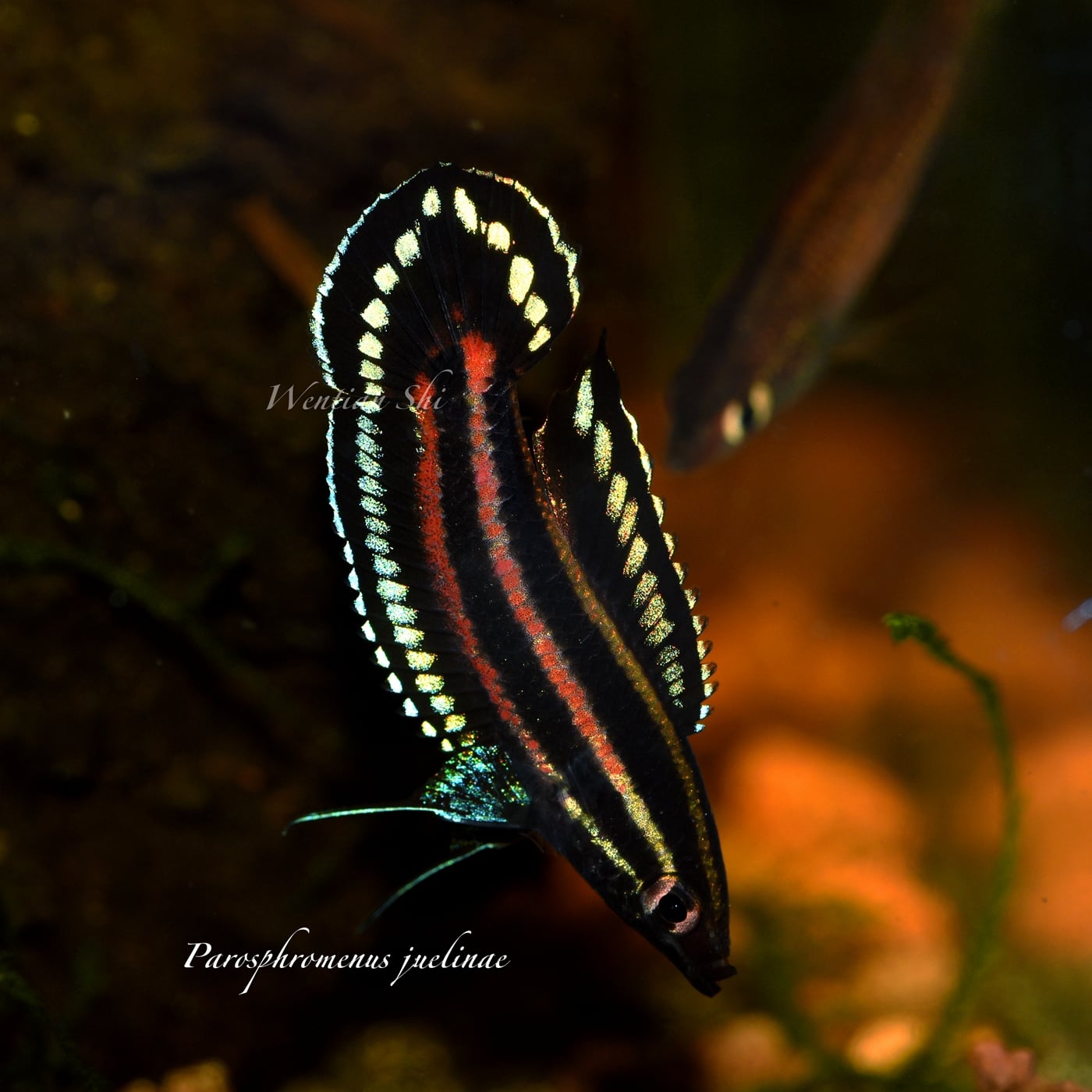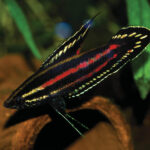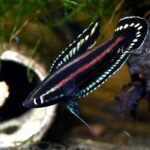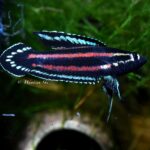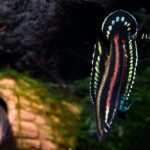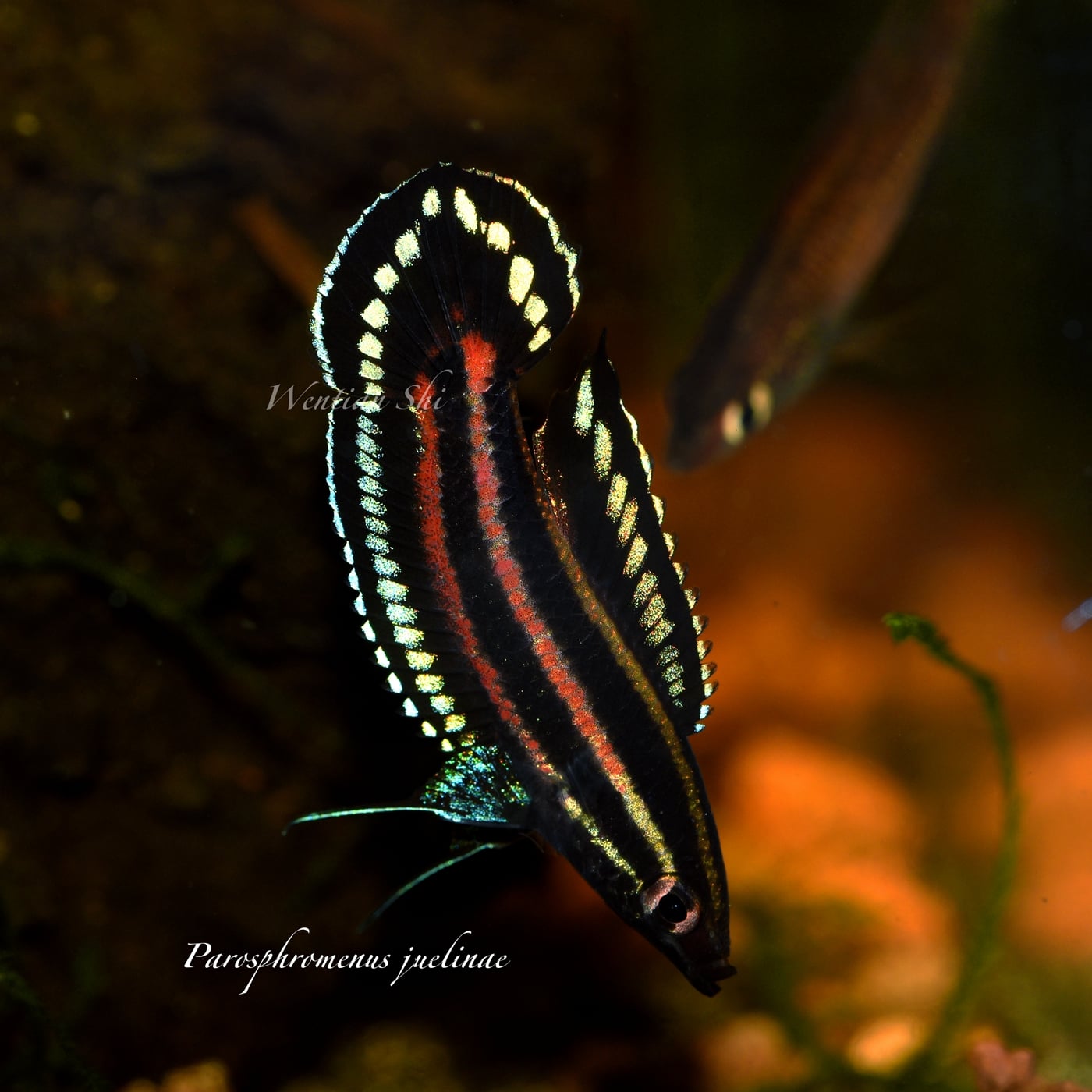
Parosphromenus juelinae
First describtion: November 2021 – WENTIAN SHI, SHUJIE GUO, HARYONO HARYONO, YIJIANG HONG & WANCHANG ZHANG
Zootaxa 5061 (1): 071–092
Characteristics: Diagnosis Parosphromenus juelinae,sp. nov., is distinguished from other species of the genus by the following unique combination of characters: the inner iridescent band in the unpaired fins is fragmented into an arc arrangement of several clearly interrupted irregular blotches (when preserved, these iridescent blotches become hyaline); the proximal part of the unpaired fins is black; dorsal-fin rays XIII–XIV, 5–7 (total 18–21, 19*); anal-fin rays X–XII, 9–10 (total 19–22, 21*), caudal fin rounded with a branched media ray, pelvic fin filament light blue; except for the dark brown stripes, the rest of the body is covered throughout by intense red blotches, which extend to the base of the unpaired fins
Similar species: The unpaired fin coloration is similar to that of P. deissneri, but it differs from the latter in having a rounded caudal fin with a non-filamentous branched median ray and a smaller anal fin. Although P. juelinae has the same caudal fin structure as P. bintan, it can be distinguished from the latter by its distinct unpaired fin coloration and the intense red color on the body flanks.
Occurence/Distribution: Parosphromenus juelinae sp. nov. is restricted to a small area on Bangka Island, Indonesia, where it occurs in a few forest peat swamps with little human interference.
This species is restricted to a few adjoining forest streams and swamps belonging to the same river system in Bangka, which are not connected with the habitats of P. bintan and P deissneri. The habitats are well- preserved and relatively undisturbed by human activities. The water bodies are densely vegetated with aquatic mac- rophytes (mainly Cryptocoryne bankanensis [Araceae] and Utricularia sp. [Lentibulariaceae]) and shaded by trees and shrubs at the bank; and the water is clear, with high tannin levels, giving a black-tea color
Threat: On Bangka Island, natural lowland habitats are seriously affected by mining activities, oil-palm plantations, and human settlement. During the field surveys on this island from 2016 to 2019, we observed dramatic habitat loss and degradation of natural landscapes, and in 2018 we noticed that the edge of the type locality had been disturbed by agricultural activities. Following the IUCN Red List Categories and Criteria (ver. 3.1), we propose Parosphromenus juelinae sp. nov. be listed as Critically Endangered B2ab (iii), based on its very restricted distribution area in a single river system on a single small island (<50 km2) with less than three known locations; and the fact that this habitat has been facing direct threats from human activities since 2018. Since there are no significant environmental conservation projects in this area, the survival of this species in the near term is clearly imperilled.
Discovery/First import: In 1993, collected for the first time, but misidentified and included into the type series of P. bintan. Ever since then, this species was considered as P. bintan and found by Kishi, Hiroyuki around 2000; later by Horst Linke etc in 2008 also as P. bintan. The most recent collection before it was recognized as a new species was in 2012 by Kishi, Lo and Zhou.
In 2017, it was recognized by Shi etc in their search for P. deissneri, that this is a new species.
Trade: This species was also commercially exported once to Singapore by Sumatra dealer with a false label as P. deissneri Biliton. This mistake was published in 2005 and lead to a missunderstanding that P. deissneri was also distributed in Belitung island.
Care/Breeding: Not different from the usual Paro standard for breeding, although early reports indicate that breeding might be slightly more difficult than most species
Behaviour/Particularities: No particularities. Horizontal to head down courtship.


